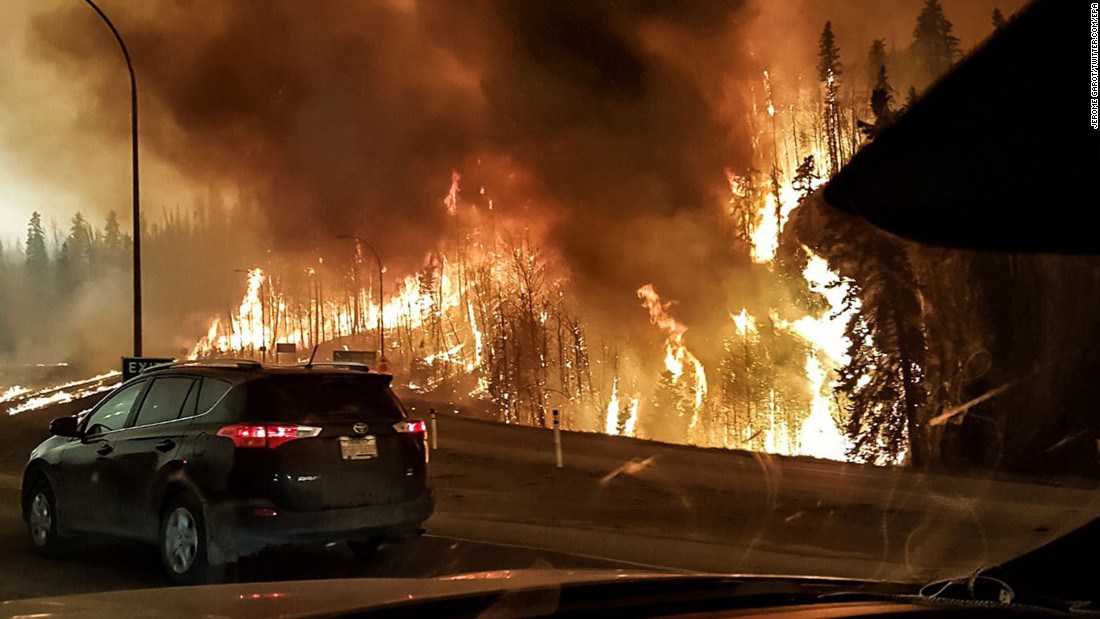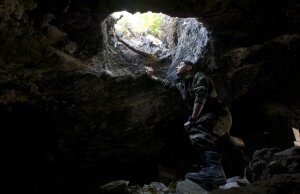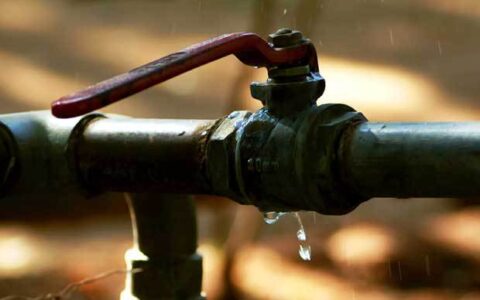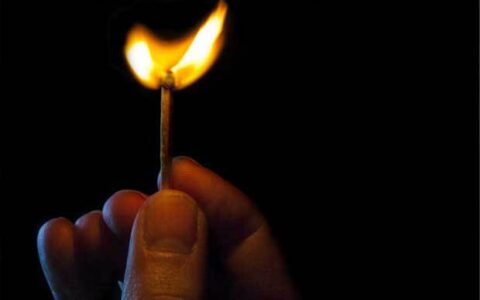
Thousands of residents remain evacuated after a destructive Northern California wildfire nearly doubled in size overnight, fed by wind and dry conditions, officials said Wednesday. The blaze burning in El Dorado County, has charred more than 53,000 acres and is 0% contained, Cal Fire said.
We are mainly preppers and have most of the basics sorted out thanks to great websites such as this but I have been thinking lately about how prepared my preps really are for SHTF.
The wildfires helped concentrate my focus and I will soon implement the next level of preparation. My risk of wildfire is small at my home and very, very real at my cottage. You might have almost no threat but even so read on because fire can visit you anyhow. Canada has an okay site to figure out regional risks and I am sure the USA has similar but use your brain and figure out your risks as relying on others is never smart.
Leaving aside the issue of if climate change is human caused (it is and it is not man-made BTW. Women are responsible as well!) or even if the Earth is experiencing severe heating (it is) I want to focus on how you can begin prepping for wildfires. This is helpful in many SHTF issues including nuclear war and civil unrest so even if you feel wildfires are unlikely in your neighborhood please read on. Of note I am planning a much more extensive article on the probable climate changes North America may experience in the next 5 to 25 years and I will debate climate change in that article not this one. This is about wildfires and fires generally.
Specific Threat of Wildfires:
Preparing in advance for these situations showed that even with a major fire burning close by people feel safe until the last possible minute. Some have bags ready and some full gas tanks. But most do not. The take away is to store gasoline (one tank full) and keep the car’s tank half full always. I already do this and simply use the stored gas every 6 months and replace. I use high-octane only for this and do not plan on multiple gallons as 50 litres is enough (one tank). It is for evacuation not driving through the wastelands looking for trouble. Many cars ran out of gas on the highway and had to wait 24 hours before help arrived. This is not a good idea at any time and especially not if you are evacuating.
Wood stoves are common generally and hopefully so amongst preppers but where is your wood stored? Against your house is a bad idea as an arsonist might get an idea or a wildfire might come by. Another issue with storing wood against your home is mice and rodents. They thrive in these piles which is cool if you are hungry but right now merely encourages them to invade your home. Build a wood shed from shipping pallets and keep it about 25 feet at least away from your primary home structure.

You know your routes (multiple) out of your neighborhood and you have driven them, right? CNN.com
Hose pipes are a good idea but can yours spray water on to your roof easily? Do you have multiple hoses so everyone in the house can damp the roof and the garden if wild fires are in the area? Is your roof made of metal? Are your gutters filled with debris or empty? Do you have clearance from the tree line that is deep enough to prevent fire jumping? Even in suburban areas there are trees and many are very close to homes. Is your council going to chop them down to create a safe area to stop fire spreading or can you legally do that yourself?
The wildfire showed the importance of pre-planning and that is what we do, eh? A major wildfire means five minutes mandatory evacuation. You know your routes (multiple) out of your neighborhood and you have driven them. In a wildfire expect smoke, flames, and fear.
Plan for this and how you will avoid sitting in a traffic jam for two hours on a route that should take ten minutes while the flames get nearer and nearer. Of course in many SHTF scenarios a car won’t work or be a safe bet but if you know your area, if your car is gassed, and if you evacuate before the mandatory evacuation is given a car is your best bet here. Not only your transport and your source of worldly goods but it is your home for a while.

Many in their cars had the windows open which in SHTF is never a great move. There are multiple videos on-line with people literally screaming to close windows as the fire suddenly hits the road they are on. There is a resource at the end on what to do if you are trapped in a car in a wildfire.
Knowledge is power so you have great local maps and have figure where the fire might come from and go to. You generally keep a close eye on local weather systems so you see the developing threat of high temperatures, low precipitation, and high winds. Best to think of the issue before others do and take steps to avoid the issue or at least have everything ready to evacuate.
You have bug out clothing for all seasons I hope. However is it all fire resistant? Seriously have you cut off a piece and tried to set it on fire? Modern clothing is excellent but some of it is very combustible. Running around evacuating with sparks and flames near you wearing great bug out clothing that is basically tinder is not smart.
I do not have a smoke hood. It is on my list of things to get. It is being moved upwards! Awesome to get out of a burning house fire and would be excellent in a wildfire. Simply put these are a need not a want and I better get more focused on needs.![]()
As a prepper I have multiple garden tools including shovels. I think five at the last count and I always get them when I can for free which is surprisingly often. Rusty shovels work just fine but people tend to throw them out! Do you have sand or soil near your home and can you cover a large area near your home with this quickly? Again removes a fuel source for an approaching wild fire and worth a try.
Do you have home insurance? Is the coverage applicable for a wildfire? Is the coverage sufficient to rebuild after a wildfire completely destroyed your home?
Call your insurer and ask those questions and get covered. Of course the policy and other documents are in a fire resistant safe and already bagged inside so you can grab and run with them. Copies are in everyone’s bug out bags I hope.
Another striking feature of the wildfire was how easily people get separated. There were two routes out, north or south. The Government said “go north” which was fine as they said this as the south route was blocked by cars but the north had little ability to sustain the evacuees. Awesome work was done and is being done but do you really need the Government to direct your escape route? They make mistakes and did so here.
Some families were separated as they split up, one to get the children and one to get the pets. Good idea but then the one party heads south and one north. Simply put identifying where you will go and meet up is essential in SHTF before you split up. Have several back up locations to meet up. People today are overly reliant on cell phones but I do not know if this failed here but system overload coupled with cell towers burning could easily make this idea to communicate a big fail. Have a plan that does not rely on cell phones or radios. If you have these and they work check in frequently on each other but if they go silent know where to go and how to get there to meet up again. Does everyone have a small and decent compass? Can everyone use it in a basic fashion? Everyone should have one each and a working flashlight. It can be very dark at noon in a wildfire.
Bug out bags are an essential even if you live already at your bug out retreat as I do. We have one for each person at home and one for each person in the car. The home version is very heavy and I do not plan to travel far on foot with it. The car version is for fast travel and each of us can easily convert the other’s car pack into one pack if we are on our own. We can debate style, weight, contents forever but each bag has $200 in five and ten-dollar bills. So $400 is always available. Taxi or accommodation or buying food/water in SHTF (initial phase of course) is the purpose and so far my partner has not been tempted to ‘borrow’ it for essentials like dog bones! I also carry a fair amount of cash on me. Recently at Costco the debit and MasterCard system failed for an extended time. Our full cart merely proceeded through the lines of agitated people and we paid the bill in cash and left. Cash is King in most localized SHTF situations and have it before the banks shut the ATMS or the power fails.

Image – CNN.com
Beyond Wildfires:
I have a fair amount of stored food in my basement, my cottage, and my garage. Fort McMurray really hammered it home to me that I really need to get most of this buried into the ground. A nuclear blast, wildfire, or a roving gang of hungry ex-military types cannot see, eat, or destroy what is buried in the ground. My home might be gone but my stores should not be burned out as well!
Think about storing small amounts of gear, food, and water along your evacuation (bug out routes) and around the local area. Think about how to find them if a big fire has gone through or a big old nuclear bomb has gone off. It is always good to split your stores and always great to be able to dig up a few days supplies as you move away from danger. This gets complex but cheap plastic food containers with double zip lock bags works just fine.




















